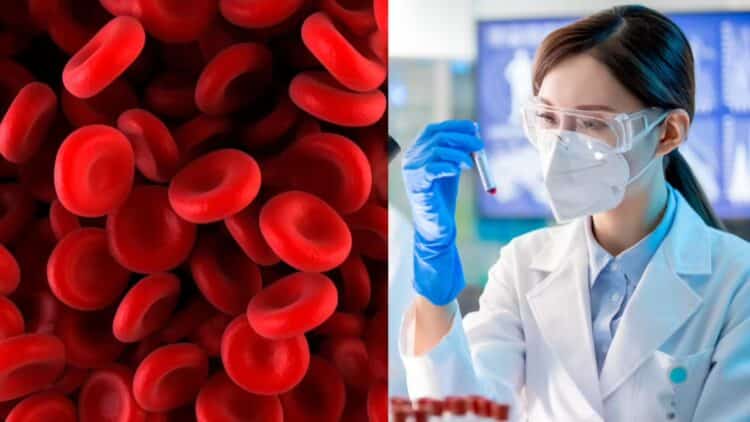The discovery of a new blood group, MAL, represents a significant milestone in modern hematology, culminating more than five decades of research. This system was identified due to the puzzling absence of the AnWj antigen in a blood sample. Years later, and after extensive investigation, the mystery was solved by researchers from the United Kingdom and Israel.
Key figures, such as hematologist Louise Tilley from the United Kingdom’s National Health Service (NHS) and cell biologist Tim Satchwell from the University of the West of England, led the effort to describe the MAL system. This finding, published in 2024, joins recent discoveries such as the Er system in 2022 and focuses on a specific genetic mutation that confers this ultra-rare blood type, crucial for improving medical care for patients with transfusion needs more complex than usual.
Antigens and transfusion safety
The science of blood groups, fundamental in transfusion medicine, dates back to the early 20th century with the identification of the ABO systems and the Rh factor (the famous “positive” or “negative”). However, human blood is much more complex; there exists a vast network of blood group systems defined by the wide variety of proteins and sugars that coat our red blood cells. Our bodies use these molecules, called antigens, as identity markers or “ID” so that the immune system can distinguish between “self” and potentially dangerous or “non-self”.
A mismatch of these markers during a transfusion can trigger a fatal immune reaction, underscoring the critical importance of identifying even the rarest of blood groups. The starting point for this discovery was a 1972 blood sample from a pregnant woman, in which the “mysterious absence of a surface molecule” was observed. The starting point for this discovery was a blood sample from 1972 from a pregnant woman, in which the “mysterious absence of a surface molecule found on all other red blood cells known at the time” was observed. This missing molecule was the AnWj antigen, a molecule so common that it is found in “more than 99.9 percent of people”.
Decades to establish MAL Blood Group
The complexity and extreme rarity of this case made the investigation a difficult and prolonged task, lasting over 50 years since the original sample was taken. Hematologist Louise Tilley, who dedicated nearly two decades to this blood phenomenon, commented: “It represents a huge achievement, and the culmination of a long team effort to finally establish this new blood group system and be able to provide the best care to rare, yet important, patients.” Tilley herself emphasized the difficulty of the work due to “genetic cases being very rare.” The international team of scientists aimed to identify the molecular basis of this anomaly.
Finally, they discovered that the AnWj antigen resides in a protein known as MAL (myelin and lymphocyte protein), hence the name of the new blood system. Tim Satchwell, a cell biologist at the University of the West of England, explained the complexity of the finding: “MAL is a very small protein with some interesting properties that made it difficult to identify and meant that we needed to explore multiple lines of research to accumulate the evidence required to establish this blood group system.” The real test came when they inserted the normal MAL gene into blood cells that were AnWj-negative. This experiment “effectively delivered the AnWj antigen to those cells,” confirming that the MAL gene was responsible.
Genetic and Future Implications
The MAL system is defined by the presence or absence of this protein. Individuals who possess “both copies of their MAL gene as mutated versions” result in AnWj-negative blood type, just like the 1972 patient. However, researchers also identified three AnWj-negative patients without this mutation, which “suggests that some blood disorders may suppress the antigen.”The MAL protein is known to perform vital functions, such as maintaining the stability of cell membranes and assisting in cellular transport. Interestingly, it has been observed that the AnWj antigen “is not actually present in newborns but appears shortly after birth”.
The greatest impact of this discovery is clinical. Now that the genetic markers behind the MAL mutation are known, patients with this ultra-rare blood type can be screened. Hospitals can determine whether the negative type is an inherited condition or an acquired suppression, which could indicate another underlying medical problem. This capability is crucial, as these rare blood types can have devastating impacts on patients, so the more we can understand them, the more lives can be saved. This type of research continues the effort to protect the most vulnerable patients.
